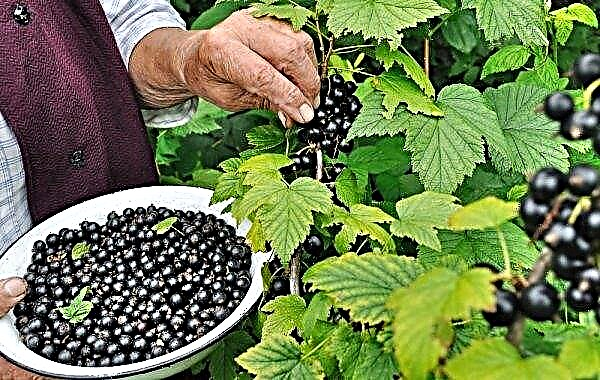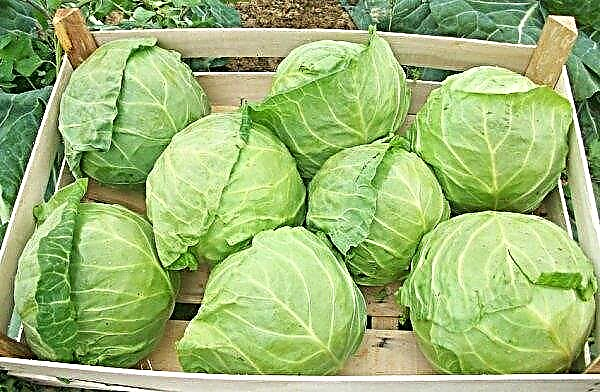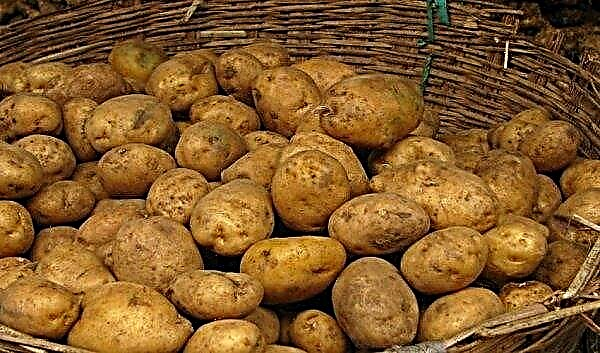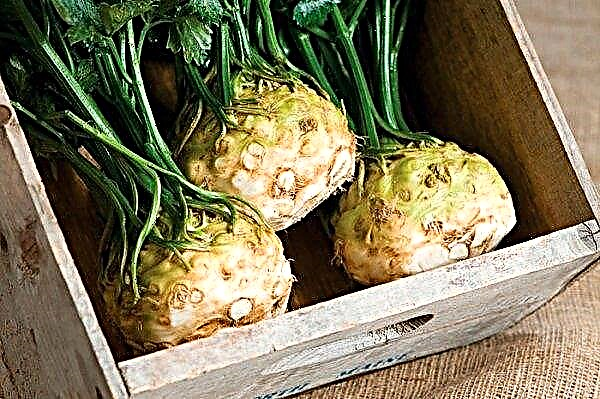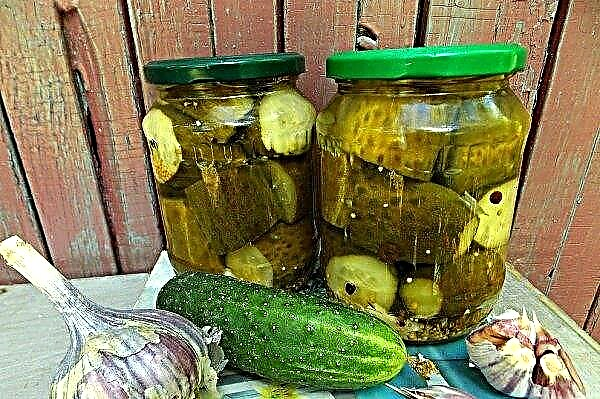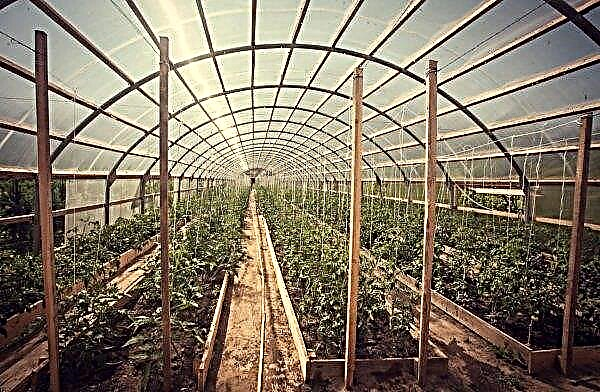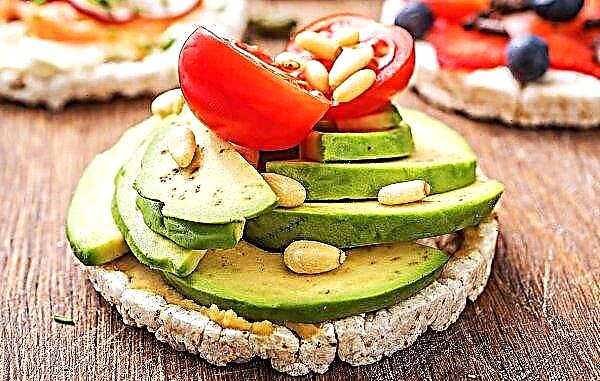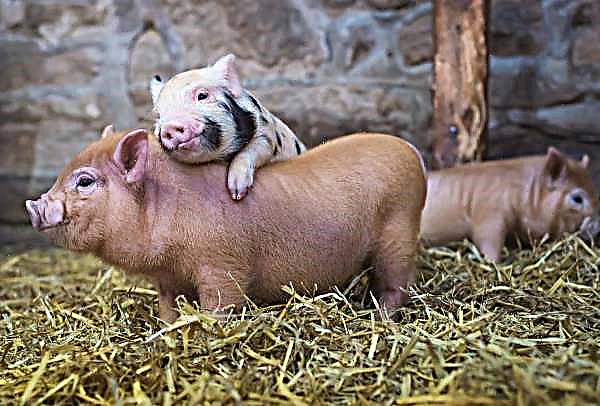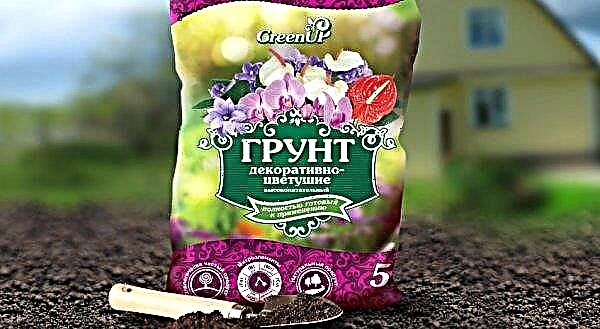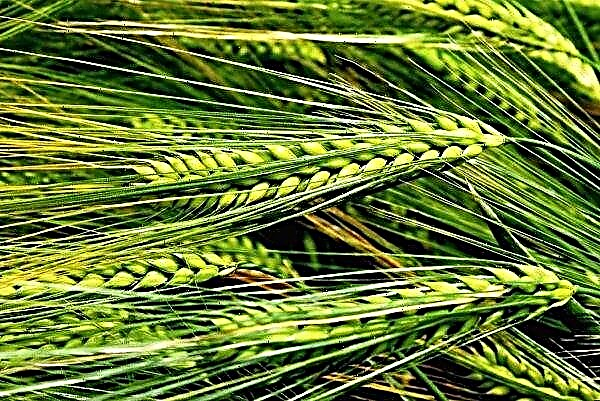Each hostess can have such an unpleasant situation: you wanted to cook soup and found that the carrot from your stocks was frozen on the balcony or wilted in the refrigerator. Do not rush to throw it away and run to the store for fresh, everything can be fixed.
The main causes of freezing carrots
The root cause of freezing one root - frostBut the circumstances in which the trouble happened may be different. These circumstances depend on where the root crops caught the frost: in the garden, in the cellar, on the balcony or somewhere else.
Carrots are fairly frost-resistant crops. Its crops quite normally tolerate frosts up to 2 ° C below zero. More mature shoots can endure even more severe frosts. And root crops in the soil with cut tops, covered with mulch, can quite normally overwinter right on the bed. In such a situation, only snowy winters, abnormal frosts and rodents threaten the vegetable.

However, if the root crop was not harvested before the first frost, which came unexpectedly and quite early, 1-2 cold nights are enough for the crop to freeze, if not all, then a significant part of it.
When stored in a cellar or on a balcony, in addition to temperature, the most important indicator is air humidity. Depending on some nuances (in what environment the vegetable is located: sand, sawdust, in bulk, etc.), the average storage temperature of the root crop should be in the range 0 ... + 4 ° С, relative humidity - 85–95%.
Important! If the storage temperature of carrots is above 5 ° C, it will begin to germinate; if it drops below 0 ° C, it will deteriorate. At a humidity below 85%, the root crop will dry, with this indicator close to 100%, it will rot.
That is, among the main reasons why your carrots may be frozen, the following should be highlighted:
- improper storage on the balcony (in bulk, on a bare concrete floor, etc.);
- carrots hibernate in a cold basement or cellar, especially if the cold is combined with a humidity level outside the normal range;
- frosts caught the crop uncleaned from the garden or wanted to leave it until spring, but the frosts were very strong (there was little snow, poor-quality mulching, etc.).

Are vegetables afraid of frost
Vegetables in different ways relate to both frost and simply prolonged cold weather. Those cultures, whose homeland is the southern latitudes, do not tolerate even slight cooling. Seeds of such fruit and vegetable crops can develop normally at soil temperature from + 11 ° С and higher (seedlings need even warmer soil), the air temperature during the day should be no lower than +18 ... + 20 ° С.
Such crops include:
- cucumbers
- Tomatoes
- pumpkin.
Did you know? At a temperature of about 0 ° C, the intensity of metabolic processes in the root crop is approximately 1/10 of the norm. Carrots with elongated root crops are stored worse than round ones. Poor frost tolerance and twisted, improperly formed, damaged root crops.
At temperatures below the indicated norm, the growth and development of the seed material slows down, seedlings or seeds weaken, the risk of developing diseases noticeably increases, and resistance to parasites decreases. Of course, for such heat-loving plants, temperatures close to 0 ° C are destructive, regardless of where the fruits are at that time: in the garden, in the basement or on the balcony.
In the temperate and northern latitudes and even the circumpolar regions (that is, in the regions located on the territory of Russia, Belarus, Ukraine), cultures that tolerate even short-term frosts, not only cooling, are widespread.
 Garden crops that can tolerate short-term frosts
Garden crops that can tolerate short-term frosts
These vegetables include:
- cabbage;
- root crops of the Umbrella family (carrots, beets, turnips, etc.);
- onion garlic.
It can be said that frosts are dangerous for almost all vegetables, fruits, fruit crops. For some plants, they are more dangerous, for others, to a lesser extent.
The thing is that vegetables, fruits, fruits consist of more than 90% of water. Water, as you know, when frozen increases in volume. And solids lose their elasticity. Accordingly, when the temperature drops to 0 ° C or lower, the water in the cells of any plant expands. At the same time, it acts on cell walls and intercellular membranes, which become more fragile upon cooling.
As a result, the walls of the cells are destroyed, and their contents (almost one hundred percent liquid) are combined into a single mass, since the destroyed intercellular membranes can not prevent this. This process is irreversible: after warming, the icy contents of the cells, although thawing, becoming liquid again, the cell walls are not restored. It should also be said that frozen vegetables may lose some of their beneficial qualities, but they are all completely harmless, you can eat them without fear.
Of course, such deformations will necessarily affect the aggregate state of the fetus and its qualities, which often become worse. However, you should not be upset: if the vegetable fails to return to its previous freshness, then you can still save and use it.

What to do if carrots are frozen
When freezing, carrots often wither, dry out. This happens due to the fact that with decreasing temperature, the level of humidity decreases, which leads to the drying of the root crop. That is, in order to return the vegetable to its former freshness, it needs to be sufficiently moistened, “drunk” with water.
Depending on how many vegetables are at your disposal, you can saturate them with moisture in various ways.
With a few root crops that just need to be refreshed, you can do the following:
- Wash the carrots, trim the tip.
- In a container suitable for height and volume, place the root crops vertically, with the tips cut off down. Pour cold water (you can even add ice) to 1/3 of the height of the carrots.
- After 4-6 hours, the carrots will look like fresh. You need to use it as quickly as possible.
 If the carrots are much larger, for example, a bag that was stored on the balcony, or several tens of kilograms frozen in the cellar, another way is suitable here:
If the carrots are much larger, for example, a bag that was stored on the balcony, or several tens of kilograms frozen in the cellar, another way is suitable here:- Take the sand (it should be sufficiently moist, otherwise add 1 liter of water to the bucket of sand, mix well), pour 4-6 cm in the boxes.
- Put a layer of root crops on a layer of sand so that the vegetables are less in contact with each other. Pour another layer of sand of the same thickness on top, all the way to the top (sand should be the bottom and top layers).
- Carrots will become fresher the next day, get it out of the sand as needed. The main part, let it be stored.

Sometimes sluggish carrots are found already in the garden, when harvesting. If for some reason it was not possible to harvest earlier, it was necessary to cut the tops, then the root crops would remain fresh in the ground. If the greens were not cut, moisture evaporated through it, which caused wilting.
In order to improve the situation, proceed as follows:
- Dig up all the carrots, sprinkle a layer of earth 10-15 cm next to the garden bed, place a crop of root crops on it. Flatten the vegetables so that the carrot layer is as thin as possible.
- Fill the carrots with a layer of earth (both layers of soil, top and bottom, should be moist, taken from the depth, not from the surface). Top cover with spruce branches or twigs and dry grass.
- After 4–5 days, root crops can be obtained, removed from them the remains of the soil, put into storage.
Did you know? Varieties of carrots that ripen late, such as the Queen of the Autumn, the Emperor, Valeria, Samson, etc., are stored better and longer than the earlier ones (Amsterdam, Carotel).
What can be done from frozen carrots
Regardless of the circumstances under which the root crop froze, one should not fall into despair. A vegetable can be saved for later use: if you eat it raw, you are unlikely to like it, but you can freeze it or make a dressing for it for the first dishes.
Such semi-finished products will be better and more useful than those sold in retail chains, and you can easily cook various dishes using carrots that you already planned to throw away.
Further freezing
The root crop can be subjected to further freezing, only already in the freezer. It would seem, what is the point of putting carrots frozen, say, in the cellar, in the freezer. But there is a point in this: when warming, carrots can go bad. In addition, the humidity in the cellar can change when the air temperature in the environment changes.
The same applies to the balcony or any other place where the root crop is frozen, rather, by chance. If you change parameters that are not dependent on us (warming or cooling and, accordingly, a drop in humidity), the vegetable may deteriorate.
The most simple and effective way to further freeze:- Wash root vegetables with cold running water, removing most of the remaining soil from the surface. That which cannot be washed off with water is cleaned with a knife and a stream of water.
- Washed and peeled roots are wiped with a kitchen towel, removing excess moisture. Do not try to wipe the carrots dry, just remove the water so that it does not drip.
- You can put the vegetable in the freezer in this form, but it is better to grate it immediately. In a grated form, the root crop takes up less space, moreover, immediately after you take it out of the freezer, it will be ready for use.
- Place the cake mix in plastic bags and the bags in the freezer. If your refrigerator has several compartments in the freezer, first place the bags in the one intended for freezing. After 2-4 hours, the semi-finished product can be transferred to a chamber designed for storage.

You can prepare frozen semi-finished products using carrots in vegetable mixtures, for example, by mixing grated root vegetables with sweet pepper, green peas, cauliflower, etc.
Important! No matter how you decide to process vegetables after freezing, remember: they can not be thawed. Frozen carrots are either immediately cooked (fried, boiled) or frozen again.
Vegetable Dressing
Frozen grated carrots is an excellent raw material for the preparation of various canned dressings for first courses. Preservation is especially relevant if you are the owner of a large volume of frozen root crops, because you do not need a freezer to store canned food. If you have other frozen vegetables, such as beets or bell peppers, they will also work.
There are a lot of recipes for preparing such gas stations, they can easily be found on thematic sites. We will offer you a simple recipe for making borsch dressing, which you can change or supplement with those vegetables that you have (for example, add boiled beans).
 Vegetable dressing can also be used as a salad
Vegetable dressing can also be used as a salad
For cooking you will need:
- carrots - 2 kg;
- beets - 2 kg;
- Bulgarian pepper - 2 kg;
- tomatoes - 1 kg;
- tomato paste - 150 g;
- peppercorns - 10-12 pcs.;
- onion - 2 kg;
- garlic - 2 medium heads;
- salt - 3 tbsp. l .;
- sunflower oil - 1 tbsp .;
- bay leaf - 4-6 pcs.;
- vinegar (9%) - 150 ml;
- hot pepper (ground or fresh) - to taste;
- sugar - 4 tbsp. l
Did you know? The natural colors of wild carrots, which can still be found in its homeland, in Afghanistan, are purple and shades of light beige. The Dutch breeders gave the usual color to the cultural plant, making a present to their royal house, whose color, derived from the surname, Orange, is orange.
The procedure for preparing a dressing is as follows:
- Carrots need to be washed, then peeled (if it has faded, leave in water for 3-4 hours after washing, then peel), grate it, do the same with beets.
- Wash the pepper and remove the stalk with seeds, chop it and peeled onions in the way you usually do for borsch. Dice the tomatoes.
- In a stew-pan or pan with a thick bottom, heat the oil, send the onions there, fry for 2 minutes, stirring occasionally. Then add carrots, pepper, after 2 minutes - beets. Sauté the vegetables for another 6–8 minutes, then add the tomatoes.
- After about 10-15 minutes (mix the vegetables periodically) add tomato paste, mixed in 3/4 tbsp. water. Let it boil, set the fire so that the contents languish rather than boil. In this mode, refueling should languish for about 40 minutes.
- Garlic must be peeled, chopped and shredded in a mortar or use a garlic squeezer.
- 2 minutes before cooking, the contents are salted, spices, sugar, bay leaf are added. At the moment of turning off the fire, vinegar and garlic are introduced, mixed, covered with a lid for 2 minutes.
- Put the dressing in sterilized jars, close the lids.
Video: Borsch dressing with sweet pepper
Usually, the fact that the carrots are frozen is found closer to the New Year. By this time, tomatoes and bell peppers are much more expensive than in autumn. So, when preparing a dressing, you can do without them, only you need to adjust the amount of salt and vinegar, if the volume of vegetables is less.
Tomatoes can be completely replaced with pasta taken in a larger volume than indicated in the recipe. Instead of pepper (or with it), you can use boiled beans. You need to cook it until it is ready, but not boiled.
Important! If in the cellar where the carrots are stored the air humidity is too high, sprinkle the root crops with crushed chalk, this will protect the vegetable from rotting.
If for some reason your carrot is frozen, it doesn’t matter, now you know how to use it. Although the methods of using the frozen root crop that we have presented are far from the only ones, be smart and imaginative, and perhaps you will come up with something new.

